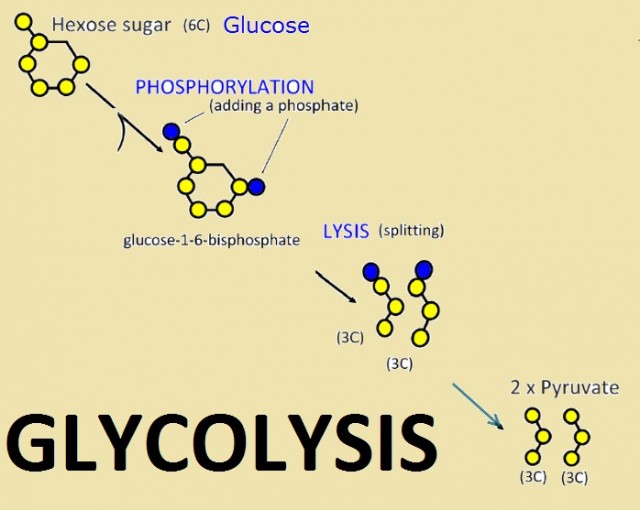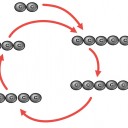Glycolysis and the Krebs Cycle
 In this activity students revisit the SL details of respiration with a few simple resources about glycolysis,the link reaction and the Krebs Cycle. Students are challenged with the production of a diagram in groups to show these biochemical pathways and to identify how many molecules of ATP, NADH+H+ and FADH+H+ are produced in each stage and in total?
In this activity students revisit the SL details of respiration with a few simple resources about glycolysis,the link reaction and the Krebs Cycle. Students are challenged with the production of a diagram in groups to show these biochemical pathways and to identify how many molecules of ATP, NADH+H+ and FADH+H+ are produced in each stage and in total?
Lesson Description
Guiding Questions
- What happens to glucose during glycolysis (glyco - sugar & lysis - splitting)?
- Which parts of respiration are joined by the link reaction & in which parts of the cells do they occur?
- What do the hydrogen carriers NAD+ and FAD do?
Activity 1 - Glycolysis and link reaction details
Either the teacher can present and explain these ![]() Glycolysis and link reaction slides or students can read them and make notes about the key details.
Glycolysis and link reaction slides or students can read them and make notes about the key details.
Some students may prefer diagrams others words and so both approaches are given in the slides.
Activity 2 - Krebs cycle details
In the Krebs cycle a six carbon molecule (citrate) is turned into a four carbon molecule using the reactions of decarboxylation and oxidation. Use the improved ![]() Krebs cycle SOLO hexagons shown below to construct a diagram explaining the Krebs cycle.
Krebs cycle SOLO hexagons shown below to construct a diagram explaining the Krebs cycle.
These images of Krebs cycle might help:
Activity 3 - Review questions - mitochondria
On a piece of A3 paper draw outline diagrams to summarise the three stages of aerobic respiration, glycolysis, link reaction and krebs cycle. Like the diagrams of the krebs cycle above.
Attempt the following ![]() IB style questions on glycolysis, krebs cycle and the link reaction
IB style questions on glycolysis, krebs cycle and the link reaction
Teachers notes
Activity 1 is about glycolysis and covers the following details.
- Phosphorylation of molecules makes them less stable.
- In glycolysis, glucose is converted to pyruvate in the cytoplasm.
- Glycolysis gives a small net gain of ATP without the use of oxygen
- In aerobic cell respiration pyruvate is decarboxylated and oxidized, and converted into acetyl compound and attached to coenzyme A to form acetyl coenzyme A in the link reaction.
Activity 2 gets students to piece together the Krebs cycle.
- In the Krebs cycle, the oxidation of acetyl groups is coupled to the reduction of hydrogen carriers, liberating carbon dioxide.
- Energy released by oxidation reactions is carried to the cristae of the mitochondria by reduced NAD and FAD.
Activity 3 asks about the location of different parts of aerobic respiration.
For students who want to know more details this musical lesson covers more details than are required in DP Biology but it does help to make sense of the processes of phosphrulation, and the role of phosphate from ATP in the lysis of glucose.
Students might also like the Krebs cycle song. A nice musical explanation of the Krebs cycle. Although it names all the intermediate compounds, there is a good emphasis on the number of carbon atoms in each molecule as well as reduction and oxydation reactions

 IB Docs (2) Team
IB Docs (2) Team


